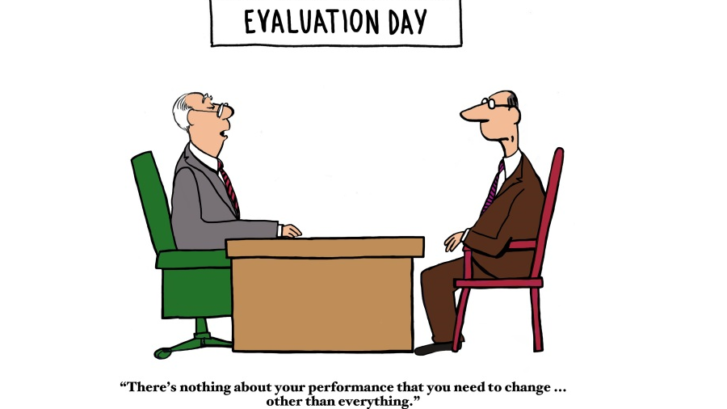At some point or another in your professional career, you have probably suffered through a terrible performance review. Whether it was the manager or the company’s required process, the whole thing wound up feeling like a waste of time and didn’t really provide any insight to either help you perform better or inspire you to keep performing. More recently, many companies have moved away from the formal review process and are trusting on managers to have meaningful conversations with their employees all on their own. This though has left many employees feeling a little lost and not receiving the feedback they need or crave.
The trend toward no annual performance reviews, unlimited paid time off, flexible remote work policies, nerf guns and dogs in the office and on-site happy hours goes a long way to attract potential employees on the surface, but having these policies in effect is a whole different thing. Employees certainly like flexible remote work policies and happy hours, but they also want to be able to get work done without distractions of nerf guns and barking dogs. And they want feedback. Specific feedback on a regular basis so they know how to move forward.
Enter the revamped annual review process known as Continuous Performance Management. In 2017, Deloitte’s Global Human Capital Trends reported that 70% of companies were in the process of reinventing their performance management process and a year later, 76% of companies had completed that process. Smart companies learned to not eliminate the review process but to revamp it to better fit a fast and flexible workforce.
A few emails ago, I discussed the hiring model presented by Patrick Lencioni in his book, The Ideal Team Player. The fundamental characteristics of hungry, humble and smart defined what to look for in prospective employees during the interview process. A quick review of the method is that people should be humble and able to work well as a team, hungry enough to help drive your business forward and have enough emotional intelligence, ‘people smarts’, to guide them through difficult situations. This is a great hiring model, but what about the people already on your team? Could this model be applied to help with the employee review process?
By pairing the Hungry, Humble and Smart evaluation with a quick evaluation of skills and performance, managers are able to gain a quick overview of an employee’s overall performance and fit within a team. This overview then allows a manager to dig deeper with the employee to develop an action plan to improve performance or continue development.
Here’s what this would look like…
First, managers review and evaluate each employee on their team against the definitions of the Hungry, Humble and Smart model.

HHS Model
(H) Humble – lacking excessive ego, able to share credit, emphasize team over self and slow to seek attention for themselves
(H) Hungry – always wanting more; more responsibility, more projects, more ways to learn and more ways to move forward
(S) Smart – have well developed emotional intelligence, good judgment, and intuition
Next, managers review each employee’s work performance and overall behavior characteristics and place them into one of the below 4 categories.

Green – Employees who are achieving their expected performance metrics, have the right skills and are also contributing to a healthy and positive way to the team/ company. These employees should be challenged, given the additional opportunity and responsibility and flexibility to innovate. Require little management and likely respond better to freedom and flexibility.
Yellow – Employees who are not achieving their expected performance goals and lack required skills, but who have a good attitude and are otherwise a positive contribution to the team. These could be newer employees who have not yet learned all of the requirements of their role, an employee who has recently transitioned into a new role or even an employee who is working on a Performance Improvement Plan (PIP). Managers should invest the bulk of their time with this group of employees as they are developing and likely able to become great contributors.
Red – These are the most dangerous employees in the company. These are employees who are achieving their performance metrics and have the needed skills but are not good team players or who are divisive in relationships. It is often tempting to overlook poor behaviors because of the high results, but if left untended, these employees can cause more damage than they are worth.
Grey – These employees do not have the needed skills, are not meeting performance requirements and have a bad attitude to go along with it all. There is no room for these employees to continue on with the company.
Once each employee is evaluated against both models, the manager will have a clearer picture of where employees are excelling or lacking and be able to use that detail to develop an action plan with specific goals, metrics, and timelines. This action plan can be used to easily check back on progress and as a guide for continuing conversations between manager and employee.
Because of the nature of this quick review process, managers are able to use this model frequently and in more informal settings with the employee and thereby doing away with the old school and more outdated feeling of the old process of reviews. Remembering that employees still want the feedback, but that they want it in a more timely manner and in a format that is useful is key to adding value to the review process.



